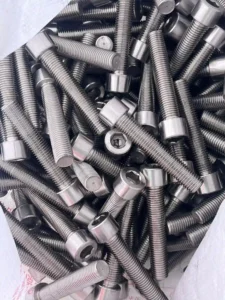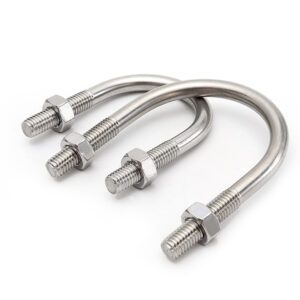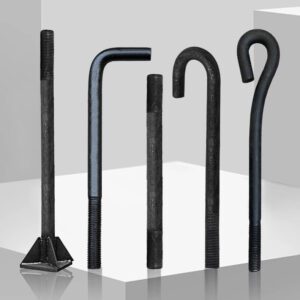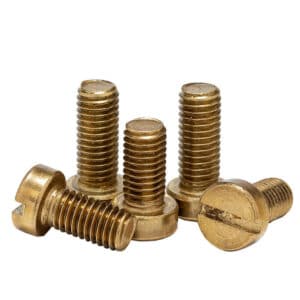Have you ever taken apart a piece of precision equipment like a high end drone, a 3D printer, or a car engine? If you look closely, you might notice a special kind of “screw.” It’s not solid, there’s a small hole running through the center, like a tiny metal straw, with threads cut along the outside.
Let’s talk about a common but often overlooked component in the industrial world – the hollow threaded rod. You might also hear it called a hollow bolt or through bolt.
Simply put, it’s a metal rod with threads on the outside and a hole through the center. And that small hole is exactly what makes this part so valuable. It’s the “hollow” feature that transforms it from a simple fastener into a functional component.
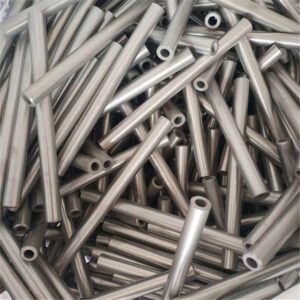
Application of Hollow Threaded Rods
They combine mechanical fastening and fluid or cable passage in one component solving two problems at once.
-
For fluid or gas flow
This is the most common application. For example, in molds, cooling water needs to flow to specific spots for temperature control. A hollow threaded rod acts as a ready made channel, just screw it into the mold and the water path is complete. The same principle applies in hydraulic systems for oil flow.
-
For cable routing
When wires or sensor cables need to pass through an equipment housing while maintaining a sealed and secure connection, a hollow threaded rod is the perfect solution. The wire passes neatly through the center while the rod fastens and seals the assembly clean and reliable. This is especially common in semiconductor and vacuum equipment.
-
For weight reduction
In aerospace and racing industries, every gram matters. Replacing solid bolts with hollow ones significantly reduces weight. These savings add up contributing to better overall performance.
In short, whenever you need to fasten something while also passing something through it, a hollow threaded rod is probably your best choice.
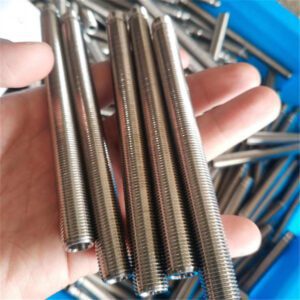
How Are Hollow Threaded Rods Made?
Cold Heading
Many people think they’re just drilled solid bolts technically possible, but far too inefficient for mass production. The most common and efficient method is cold heading (cold extrusion).
Step 1: Cutting
Metal wire coils (usually made of steel, stainless steel, or alloy steel) are fed into a machine and cut to the required length, forming small cylindrical blanks.
Step 2: Preforming
The blank is placed into a die and pressed with enormous force to form the initial head shape.
Step 3: Piercing & Thread Forming
A strong punch drives into the center of the material, the metal isn’t drilled away, but squeezed and displaced, forming a hollow cup shape. This process produces no material waste and creates a stronger grain structure. Finally, threads are rolled onto the outside using thread dies.
Cold heading is fast, efficient, and produces high strength parts for most standard hollow threaded rods.
2.Deep Hole Drilling — For High Precision Applications
For rods with extra long or ultra small inner holes, or when high surface smoothness inside is required (e.g., in medical or optical equipment), deep hole drilling is used. This really is “drilling a hole” in a tiny bolt ,costly, but unmatched in precision.
3.Post Processing
No matter how it’s formed, the result is still a rough blank. It then goes through heat treatment to increase hardness and strength, and may receive a finish (like zinc or nickel plating) for corrosion resistance. Finally, each batch is carefully inspected before packaging and shipment.
How We Do It
As a manufacturer specializing in hollow threaded rods, we focus on doing this one thing well. Precision, strength, and consistency aren’t just buzzwords , they directly affect the stability of our customers’ equipment.
-
Material Selection
-
Choosing the right material based on the environment — strength, corrosion resistance, and more.
-
Process Control
- From die precision during cold heading to temperature control during heat treatment, every detail matters.
- Quality Inspection: Checking dimensions, thread accuracy, and surface quality — every batch is strictly tested.
From our experience, customers don’t just need a “standard part” , they need a solution for their specific problem. Details like inner hole finish, thread precision, or special surface finishes often make all the difference. We offer a wide range of customizable hollow threaded rods, and we’re here to help you find the right solution with our expertise.

